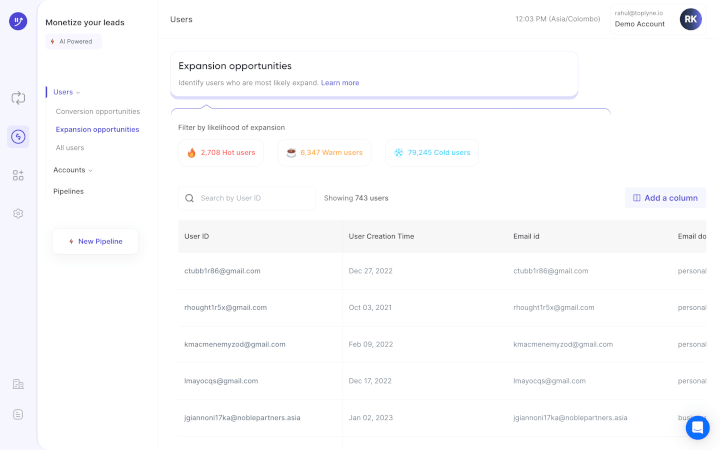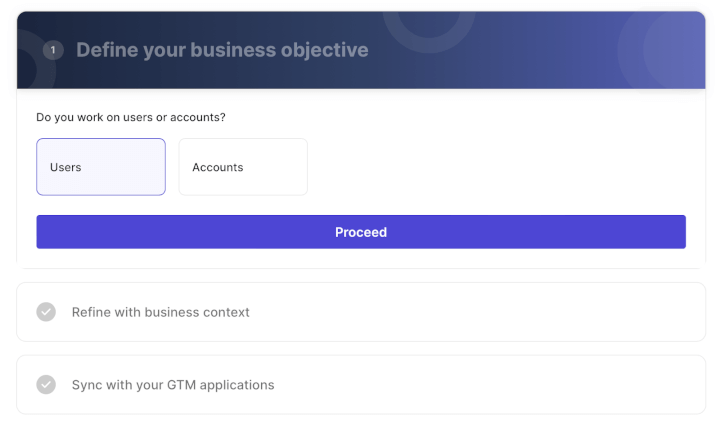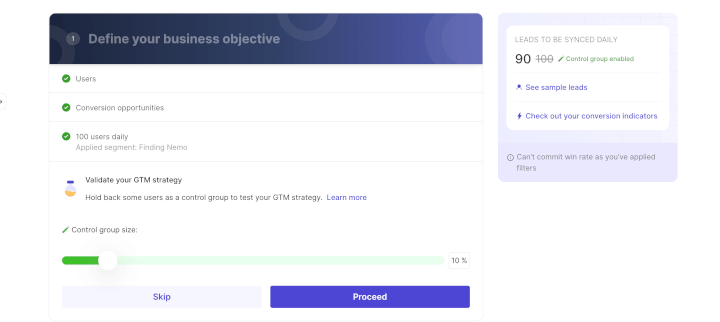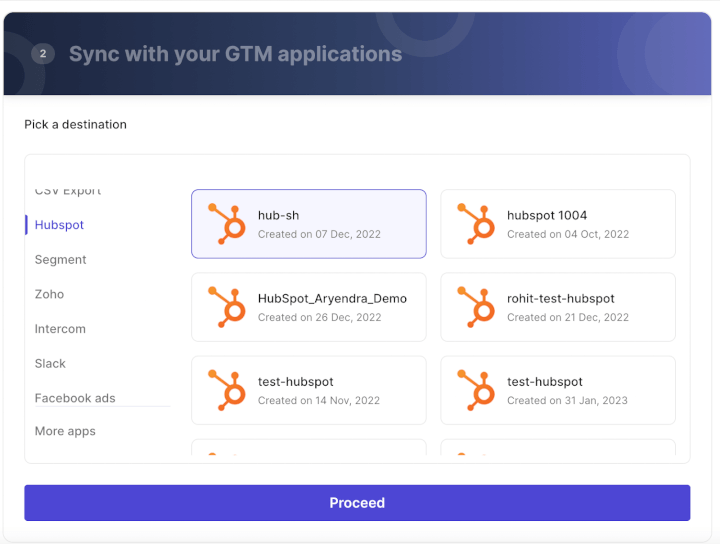First-Party Data Demystified: A Primer for B2B Sales

Data forms the backbone of every sales rep’s strategy who is crushing her quota. Data about potential customer gets more meetings booked and eventually leads to more deals closed. There are largely three sources of customer data: the data you collect from your users (first-party data), customer data you gather from a trusted partner (second-party data), and data you acquire from a data aggregator (third-party data).
While all three types of customer data significantly help create personalized experiences for your prospects, the data you collect firsthand from your users is more accurate and offers high-quality insights. You have control over collecting, analyzing, and storing data and adhering to data privacy regulations like the General Data Protection Regulation (GDPR) and California Consumer Privacy Act (CCPA). You own all of the customer data you collect.
I. Diving Deep: What is First-Party Data?
You collect first-party data directly from your users. There are different types of data along the customer journey, and leverage them for various purposes, from creating personalized experiences, designing loyalty programs, and improving customer engagement.
Your CRM is a primary source of first-party data, showing users’ demographic data, contact information such as phone numbers and email addresses, and transaction and purchase histories. A customer data platform (CDP), which pulls customer data from multiple sources and provides a unified view of the customer, is another way to gain data-driven insights.
Customer actions on your site, product usage, customer surveys, quizzes, loyalty programs, lead generation forms, social media profiles, and billing data are examples of the first-party data collected by SaaS companies.
II. Advantages Over Other Data Types
- Better insights into ICP, use cases, and industry segmentation
- First-party data points allow you to group companies by their shared characteristics and create rich ideal customer profiles (ICPs). The data sets are required for firmographic segmentation based on industry type, company size, revenue, location, and other information.
- Use cases of first-party data include predicting prospects’ future actions, creating content that resonates with your target audience, and targeting lookalike buyers.
- Higher conversion rates due to personalization
- First-party data is among the data sources that provide a comprehensive understanding of the needs and challenges of different customer segments. You’re better able to create tailored customer experiences and offers that lead to higher conversions.
III. Utilizing First-Party Data in B2B Sales Processes
- Enhancing customer personas: Information on company representatives' roles and employment history, from lead generation forms and LinkedIn profiles, enables you to build complete and accurate buyer personas.
- Better segmentation: You can use first-party customer data to divide your buyers into smaller groups based on common characteristics, needs, and behaviors. You’ll be better able to tailor your sales messages and digital marketing efforts to the specific requirements of each segment.
- Lead Scoring: First-party data tells you about the key characteristics of your ideal buyer. From this information, you can determine the behavioral criteria that are indicative of a high-quality lead and assign appropriate point values to characteristics.
- Personalized Outreach Messaging: A strategy to collect data directly from customers allows you to reach prospects in a personalized and meaningful way. It can help build deeper customer relationships that help boost retention and lifetime value.
- Tailored Demos: The B2B sales cycle typically involves tailored demos and proposals. First-party data helps nurture prospects effectively and provides the leverage needed to win deals.
IV. Tools for First-Party Data Management
- A common way is to add pixels to your website, product, or social media pages to collect first-party data about people’s behaviors and record it within your CRM or CDP. Google Analytics is an example of a tool that collects first-party data from products like Search and YouTube.
- Customer surveys, user registration forms, and chatbots are other ways. Customers may proactively share their interests and preferences with you with the expectation that you will use them to improve their experience using your product. The data that customers themselves share with companies is called zero-party data.
- With Google Analytics, you can view your organic traffic, bounce rate, time on site, demographics, conversions, and other metrics. You could analyze this data for patterns and trends in customer behavior and compare the findings with third-party data.
- It is also essential that you combine various types of first-party data like CRM data, product usage, and billing data, enrich it with third party data, and use it to find sales pipeline from your self-serve funnel. Toplyne is a behavioral lead scoring platform used by Vercel and Canva that does this for you.
Here’s how companies like Canva and Vercel generate sales pipeline from their self-serve funnel using Toplyne:
- Step 1/7: Create monetization playbooks to surface conversion and expansion opportunities (leads most likely to convert to paying customers, and teams most likely to grow into larger teams)

- Step 2/7: Choose the right leads to target – users (individual users) or accounts (a group of users with an organization).

- Step 3/7: Select the frequency at which you would want leads synced in your GTM apps.

- Step 4/7: Define how many leads you want by either the number of leads or your expected win rate, depending on your sales capacity and GTM strategy.

- Step 5/7: Build custom segments - Build custom segments based on And/Or logic at the deepest level of sub-properties within your product analytics.

- Step 6/7: Validate your GTM strategy - Hold back some users as a control group to test your GTM strategy.

- Step 7/7: Sync your product qualified pipeline into your GTM destinations - CRMs, sales & marketing execution tools, and customer engagement platforms.

V. Conclusion
With browsers blocking third-party cookies, companies are increasingly having to rely on their third-party customer data. In fact, companies that link their first-party data sources generate double the revenue from a single ad, communication, or outreach and boost cost efficiency by 1.5 times. A first-party data strategy should be imperative.
Before collecting the data, think about what you want to achieve: do you want to drive more leads, create personalized content for account-based marketing, or increase brand awareness? This helps you set the right infrastructure to capture the first-party data that you can layer into your sales processes.


.svg)









.png)